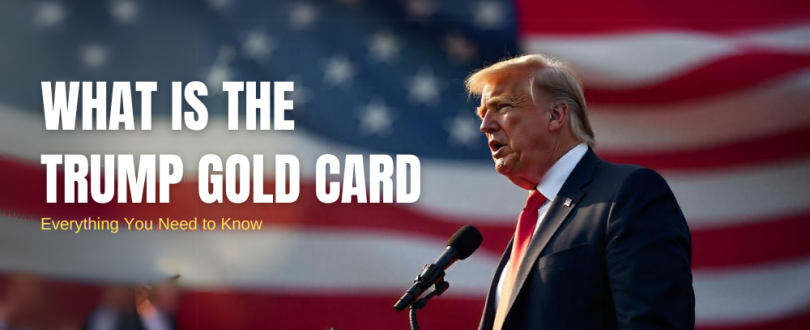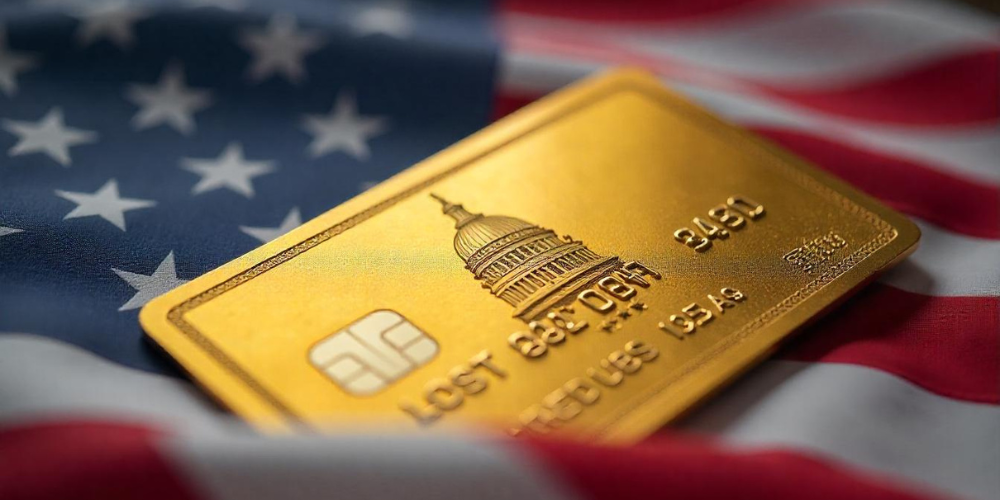
In February 2025, former President Donald Trump unveiled a bold new immigration initiative: the Trump Gold Card Visa. This proposed program aims to offer wealthy foreign nationals a direct path to U.S. permanent residency—and eventually citizenship—for a $5 million fee. Positioned as a replacement for the existing EB-5 investor visa, the Gold Card has sparked both interest and controversy. In this blog, we’ll delve into what the Trump Gold Card Visa entails, its potential benefits, criticisms, and the legal hurdles it faces.
What Is the Trump Gold Card Visa?
The Trump Gold Card Visa is a proposed immigration policy designed to attract affluent foreign investors by offering them U.S. permanent residency in exchange for a $5 million payment to the U.S. government. Unlike the EB-5 program, which requires investment in specific U.S. businesses and job creation, the Gold Card focuses solely on the financial contribution, without mandates on how the funds are used within the economy. Trump has touted this initiative as a means to reduce the national debt and stimulate economic growth by attracting high-net-worth individuals to the United States.

Key Features of the Gold Card Visa
1. $5 Million Price Tag
Applicants would be required to pay $5 million directly to the U.S. government. This fee grants them permanent residency rights, akin to those of a Green Card holder, and a pathway to citizenship. The substantial cost is intended to ensure that only the wealthiest individuals apply, thereby maximizing revenue for the U.S. Treasury.
2. “Green Card Privileges Plus”
Trump has described the Gold Card as offering “green card privileges plus,” suggesting additional benefits over traditional permanent residency. One notable proposed advantage is the exemption from U.S. taxes on foreign income, a significant departure from current tax obligations for Green Card holders and citizens.
3. No Investment or Job Creation Requirements
Unlike the EB-5 program, which mandates investment in U.S. businesses and the creation of at least 10 full-time jobs, the Gold Card would not require applicants to invest in specific projects or demonstrate job creation. This simplification aims to streamline the process and attract more applicants.
4. Potential Revenue Generation
Trump has projected that selling one million Gold Cards could generate $5 trillion, which he suggests could significantly reduce or eliminate the national debt. However, critics question the feasibility of attracting such a large number of ultra-wealthy applicants.
Comparison with the EB-5 Visa Program
The EB-5 Immigrant Investor Program, established in 1990, allows foreign investors to obtain U.S. permanent residency by investing $800,000 to $1.05 million in a U.S. business that creates or preserves at least 10 jobs. In contrast, the Gold Card requires a higher upfront payment without specific investment or job creation stipulations. While the EB-5 program has faced criticism for fraud and inefficiency, it has also contributed to economic development in various regions.

Legal and Political Challenges
1. Congressional Approval
Implementing the Gold Card Visa would likely require amendments to the Immigration and Nationality Act and the U.S. tax code. As of now, no such legislation has been introduced in Congress, raising questions about the program’s legal viability.
2. Tax Code Implications
The proposed tax exemption for foreign income would necessitate changes to the Internal Revenue Code. Legal experts emphasize that such significant alterations cannot occur without congressional action.
3. Ethical Concerns
Critics argue that the Gold Card commodifies U.S. residency and citizenship, favoring the wealthy and potentially undermining the integrity of the immigration system. There are also concerns about national security and the potential for misuse by individuals seeking to launder money or evade justice.
Public and Media Reactions
The Gold Card proposal has elicited a range of reactions. Supporters view it as an innovative way to attract investment and reduce the national debt. Detractors, including late-night comedians and political commentators, have mocked the initiative, likening it to selling U.S. citizenship to the highest bidder. Jimmy Kimmel, for instance, compared it to a casino rewards program, highlighting concerns about the commodification of American residency.
Global Context
Investor visa programs are not unique to the United States. Countries like Portugal, Greece, and Malta offer “golden visas” that grant residency or citizenship in exchange for investment. However, the U.S. Gold Card’s $5 million price tag is significantly higher than most international counterparts, which typically require investments ranging from $250,000 to $1 million.
Conclusion
The Trump Gold Card Visa represents a significant shift in U.S. immigration policy, emphasizing wealth as the primary criterion for residency and citizenship. While it promises substantial revenue and simplified processes, it also raises legal, ethical, and practical concerns. As the proposal awaits legislative action and public scrutiny, its future remains uncertain. Prospective applicants and policymakers alike will need to weigh the potential benefits against the broader implications for American society and its values.

